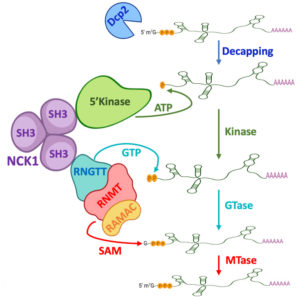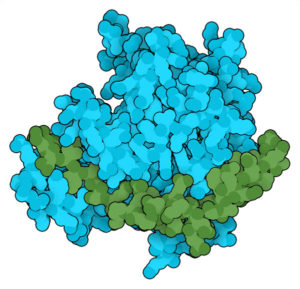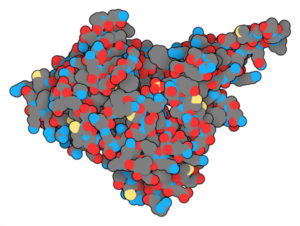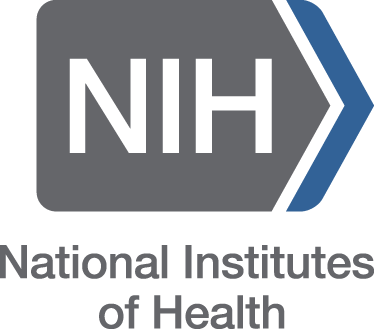The Molecular Biology of Cytoplasmic Capping
Cytoplasmic RNA recapping, the process by which cells can return a 7-methylguanosine (m7G) cap onto an uncapped mRNA, is an epitranscriptomic process with large potential in post-transcriptional gene regulation. Currently, much remains unknown about this potentially vital process. The lab uses both transcriptome-wide (RNA-seq, ribosome profiling, and oxford nanopore long read sequencing) and targeted methods (qPCR, polysome gradients, etc.).


The lab’s ultimate goals with respect to cytoplasmic capping are to:
- Elucidate the mechanisms by which RNAs are generated for the recapping machinery
- Determine how uncapped mRNA ends are recognized and targeted for recapping
- Complete the characterization of the cytoplasmic capping complex
- Assess the effect of cytoplasmic capping on the proteome
- Uncover the evolutionary role of cytoplasmic RNA recapping
- Learn which cellular proteins play a role in cytoplasmic capping
We hypothesize that mis-regulated cytoplasmic capping can drive oncogenic transformation and chronic stress responses that have been linked to cardiovascular disease. Eventually, we hope that a more detailed knowledge of cytoplasmic capping could be used to develop drug responsiveness screens and/or RNA therapeutics.

Current Support:
NIH – NIGMS: R35GM137819 (8/2020 – 6/2025; PI: Kiss, DL)
Houston Methodist Research Institute Career Cornerstone Award – (1/2021 – 12/2025; PI: Kiss, DL)
Past Support:
Career Development Award from the American Heart Association
(20CDA35310329; 7/2020 – 6/2023; PI: Kiss, DL)
molecule images from: Goodsell DS, Autin L, Olson AJ (2019) Illustrate: Software for Biomolecular Illustration. Structure (Epub ahead of print), doi: 10.1016/j.str.2019.08.011.
Last Updated: September, 2023




